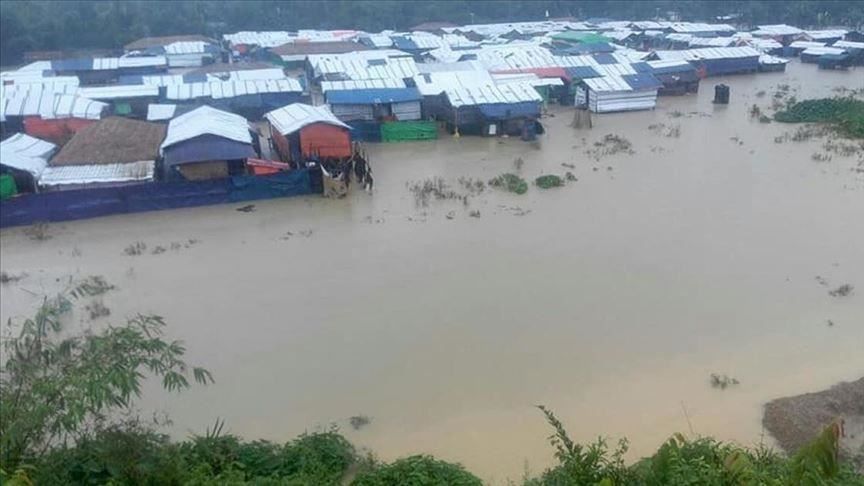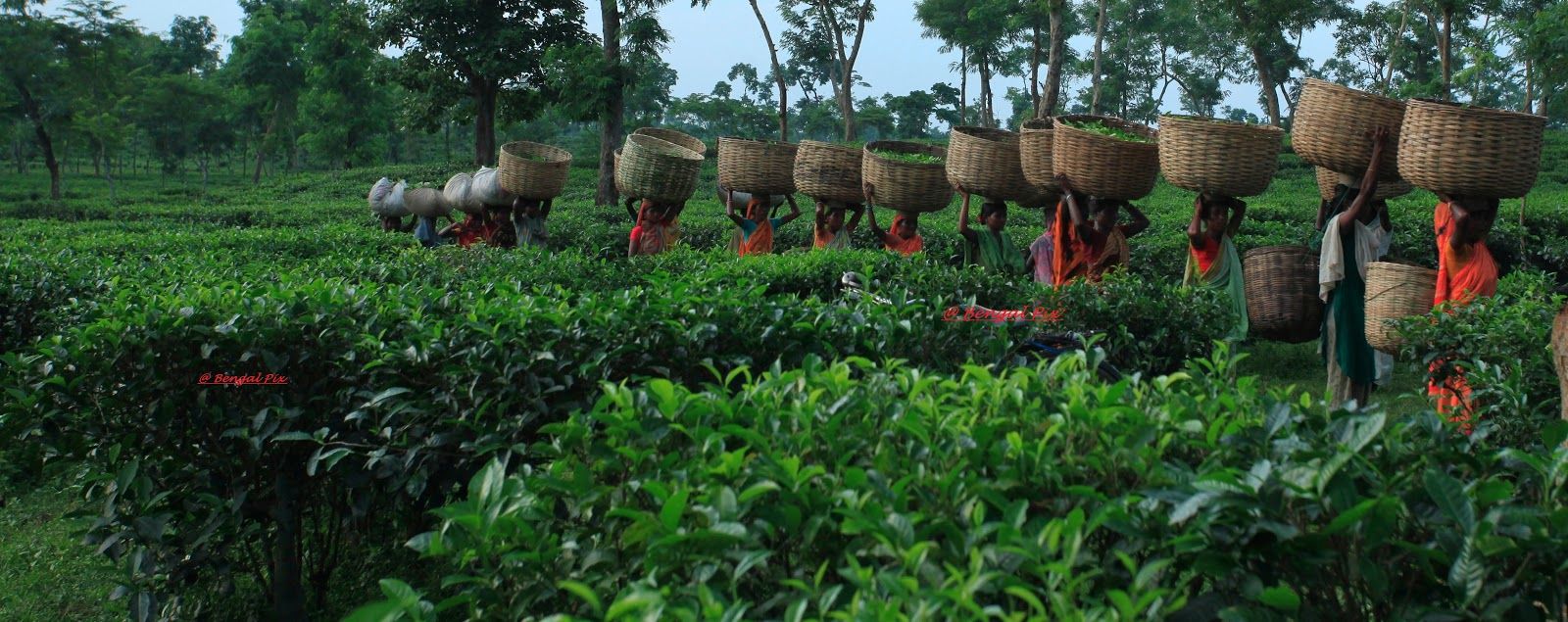Flood situation in Bangladesh and Reduced Tea production.

Bangladesh Meteorological Department (BMD) warned that the country will experience heavy to very heavy rainfall all over the country in the next 24 hours
Due to heavy rainfall and a steady rise in the water levels of our main rivers, the overall flood situation is likely to deteriorate, bringing more misery to the lives of people in the north and northeastern districts of Bangladesh.
According to the Flood Forecast and Warning Center (FFWC), the rivers in the country’s north are expected to rise further for the next few days, worsening flooding in Kurigram, Gaibandha, Rangpur, Nilphamari, Lalmonirhat, Bogra, Netrokona, Jamalpur, Natore, Sunamgonj, and Sylhet.
“Water levels of the Brahmaputra, Jamuna, Ganges, Padma, and of all other major rivers of the upper Meghna basin in the northeastern region were on a rising trend till 9am today and this may continue in the next 72 hours due to onrush of upstream water coupled with heavy to very heavy rainfall,” added the FFWC in a bulletin on Sunday.
Earlier in the day, the Bangladesh Meteorological Department (BMD) warned that the country will experience heavy to very heavy rainfall all over the country in the next 24 hours.
Of the 101 water level monitoring stations of the Bangladesh Water Development Board across Bangladesh, 76 stations observed an increase in water levels, while 23 saw a decrease. The water level remained unchanged at only two stations.
Water levels at 16 points in rivers across the country are currently flowing above the danger mark including on the Brahmaputra, Jamuna, Dharla, Jamuna, Surma, Teesta, Gur, and Sumeswari rivers.
The FFWC has predicted that Teesta and Dharla will see a rise in water levels in the next 24 hours, and the Jamuna river will cross the danger mark at Kazipur and Sirajganj points.
The Padma river will flow over the danger level at Goalundo point, it added.
The Flood Forecasting and Warning Center (FFWC) has also predicted that heavy rainfall is likely to occur in the country’s southeastern hill regions and it may cause a rapid rise of water levels in the Sangu, Halda, Muhuri, and Matamuhuri rivers in that region.
In the last 24 hours, the waters of the Halda at Narayan Hat point rose to 362cm, and the Muhuri at Parshuram point rose to 222cm.
Speaking to Dhaka Tribune, meteorologist Abdul Mannan said: “Heavy to very heavy rainfall will continue for the next couple of days all across Bangladesh. But the country’s northern districts and the Sylhet and Chittagong region will face more rain than other parts.
“Monsoon is now active over us. After a few days, we will see the effects of the monsoon declining along with a decline in the intensity of rainfall.”
The affected continue to suffer
In Sylhet, the overall flooding in the district has worsened despite limited rainfall. As of 3pm on Sunday, the Surma and Sari rivers rose significantly at several points.
According to local Water Development Board sources, nine unions and large areas of the municipality of Kanaighat upazila are currently flooded.
Many fisheries, and hundreds of hectares of Aman rice cultivation in the district, are now completely submerged, they added.

Speaking to Dhaka Tribune, UNO Md Bariul Karim Khan, said: “I am monitoring the overall flood situation in the district.”
In Gaibandha, rainwater and water from upstream in the hills has sharply increased water in all major rivers.
The rise in water level has affected the low-lying “char areas” and the Brahmaputra river basin, with thousands of people growing concerned. Flood control embankments in the district were damaged by the pressure of rising waters.
Md Mokhlesur Rahman, an executive engineer at the local WDB, said: “Various points of the Brahmaputra flood control embankment are at risk due to the recent rise in water level, but necessary steps have been taken to prevent any disaster.”
In Kurigram, all the rivers including the Dharala, Brahmaputra, and the Teesta, are flowing above danger point. With the latest developments, as many as 50 unions of eight upazilas in the district are now underwater.
Rapid river erosion has already damaged the flood control embankments of the district.
Contacted, Deputy Commissioner of Kurigram district Md Rezaul Karim said: “We have taken all necessary measures to tackle the flood situation. We have conducted emergency meetings with all those concerned, to prepare a work plan.”
In Tangail, as many as 21,178 families of the district have been marooned and more than 6,000 hectares of croplands have been damaged in six upazilas.
As of Sunday, at least 586 houses and other infrastructure, including a school, got devoured by the Jamuna river. As many as 1,075 infrastructures, including houses, were partially damaged by river erosion.
Rezaul Karim, a deputy assistant engineer of Tangail WDB, said: “The water in the rivers is rising due to the heavy rainfall. Things might deteriorate further in the coming days.”
In Jamalpur, the overall flood situation in the district has worsened with the Jamuna flowing 17 centimeters above danger level at Bahadurabad Ghat point over the last 24 hours.
“The first phase of the floods was very bad. Around 400,000 people were marooned then. And now, before we could even recover from that damage, the second phase of the flood has rattled us,” said local WDB Executive Engineer Md Abu Sayed.
“Due to heavy rainfall in India, the Jamuna is rising so rapidly,” he added.
In Nilphamari, the flood waters have been increasing and the Teesta river was flowing 20 centimeters higher than the danger mark till 12pm on Sunday.
The suffering in six unions of Dimla upazila is far from over.
Speaking to Dhaka tribune, Dimla upazila UNO Jayshree Rani Roy said: “There are some who have already taken shelter and are safe, while some are waterlogged and stuck in their homes.
“In the first phase of the flood, Dimla upazila was allocated aid of only 1.77 metric tons of rice, Tk158,000 in cash, and 200 packets of dry food. Now that has been increased to 60 metric tons of rice and 500 packets of dry food. Tk100,000 has again been provided by the government to be given as financial assistance to people adversely affected by the floods..
Weather forecast
The Bangladesh Meteorological Department or BMD on Sunday warned that all divisions of the country will see heavy to very heavy rainfall as monsoon is active over Bangladesh.
It said in its weather forecast that the axis of the monsoon trough runs through India’s Rajasthan, Panjab, Haryana, Uttar Pradesh, Bihar, West Bengal, and Assam, across to the northern part of Bangladesh.
“One of its associated troughs extends up to the Northeast Bay. Monsoon is active over Bangladesh and strong over the North Bay.”
According to the BMD forecast, light to moderate rain/thundershowers accompanied by temporary gusty winds, are likely to occur at most places over Mymensingh, Rangpur, Barisal, Chittagong and Sylhet divisions and at many places over Dhaka, Khulna and Rajshahi divisions, with moderately heavy to very heavy rainfall in places all over the country.
Aid for the flood-affected
The Ministry of Disaster Management and Relief has allocated for cattle feed, Tk200,000 in each district affected by the floods. It has also decided to spend the same amount for each flood-affected district to feed children.
The ministry has also provided as many as 2,000 packets of dry food in every district of the country affected by the floods, said officials.

Tea production down by more than 10% due to heavy rain, flooding in Bangladesh, Assam and West Bengal
Heavy rain and flooding hampered work in the tea gardens of Bangladesh, Assam and West Bengal last month, pulling down production in both states by more than 10%, according to industry executives. “It is still raining heavily in Assam and North Bengal. This is going to impact crop size further in July,” said secretary, Tea Association.
Last year, the tea estates of North Bengal and Assam had produced 370 million kg of tea in the January-June period. According to industry estimates, this year the crop size will be around 235 million kg in the first six months, a shortfall of 135 million kg. “A shortfall in crop may push up prices temporarily, but whether that price trend will continue throughout the year is a big question. A huge fall in tea crop is unlikely to help the tea companies much as the cost of production does not come down,” said our local representative.

Tea production, particularly in Bangladesh, Assam and West Bengal, was hit in the March-June period due to restrictions on labour deployment to curb the spread of Covid-19.


